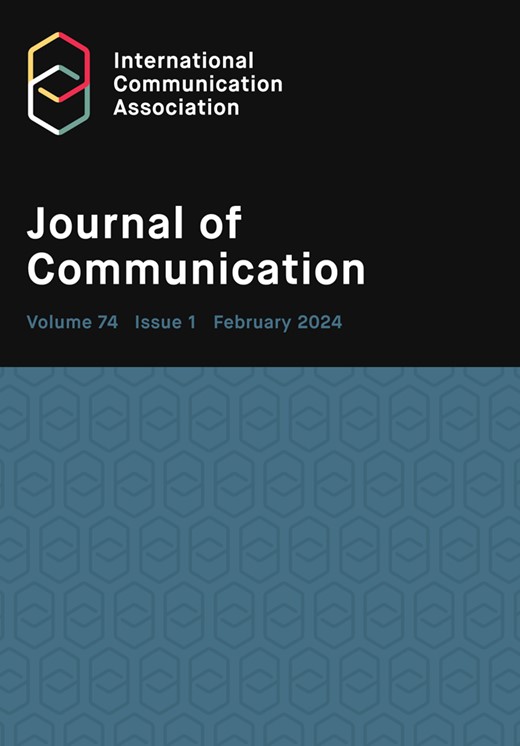Facebook上的视觉错误信息
IF 5.5
1区 文学
Q1 COMMUNICATION
引用次数: 9
摘要
我们对Facebook上基于图像的政治错误信息进行了首次大规模研究。从2020年8月到10月,我们从14,532个页面和11,454个公共群组中收集了13,723,654个帖子,这些帖子加起来几乎占了Facebook上美国公共政治内容的所有参与。我们用感知哈希来识别重复的图像,用计算机视觉来识别政治人物。23%的抽样政治图像(N = 1000)包含错误信息,20%的抽样图像(N = 1000)包含政治人物。我们在错误信息的帖子中发现了巨大的党派不对称,右倾图片误导的可能性是右倾图片的5-8倍,但几乎没有证据表明误导性图片会产生更高的参与度。以前的学术研究,大多是对不可信域名的链接进行分类,忽略了图片帖子,这导致了大量的错误信息。这项研究表明,新的计算机辅助方法可以扩展到数百万张图像,并有助于解决长期以来对视觉政治传播进行更系统研究的需求。本文章由计算机程序翻译,如有差异,请以英文原文为准。
Visual misinformation on Facebook
We conduct the first large-scale study of image-based political misinformation on Facebook. We collect 13,723,654 posts from 14,532 pages and 11,454 public groups from August through October 2020, posts that together account for nearly all engagement of U.S. public political content on Facebook. We use perceptual hashing to identify duplicate images and computer vision to identify political figures. Twenty-three percent of sampled political images (N = 1,000) contained misinformation, as did 20% of sampled images (N = 1,000) containing political figures. We find enormous partisan asymmetry in misinformation posts, with right-leaning images 5–8 times more likely to be misleading, but little evidence that misleading images generate higher engagement. Previous scholarship, which mostly cataloged links to noncredible domains, has ignored image posts which account for a higher volume of misinformation. This research shows that new computer-assisted methods can scale to millions of images, and help address perennial and long-unanswered calls for more systematic study of visual political communication.
求助全文
通过发布文献求助,成功后即可免费获取论文全文。
去求助
来源期刊

Journal of Communication
COMMUNICATION-
CiteScore
11.60
自引率
5.10%
发文量
41
期刊介绍:
The Journal of Communication, the flagship journal of the International Communication Association, is a vital publication for communication specialists and policymakers alike. Focusing on communication research, practice, policy, and theory, it delivers the latest and most significant findings in communication studies. The journal also includes an extensive book review section and symposia of selected studies on current issues. JoC publishes top-quality scholarship on all aspects of communication, with a particular interest in research that transcends disciplinary and sub-field boundaries.
 求助内容:
求助内容: 应助结果提醒方式:
应助结果提醒方式:


